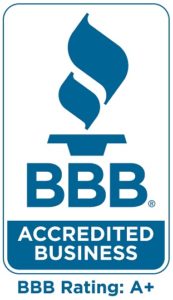DIY projects are more popular than ever, and there’s no denying the satisfaction that comes from improving your home with your own two hands (and saving money in the process). For many projects, a little research, the right tools, and a weekend of hard work can make a big difference. But when it comes to installing or replacing home insulation, things get more complicated, and more risky, than you might think.
Unfortunately, insulation installation isn’t just about rolling out batts in the attic or filling empty wall cavities. Done improperly, it can lead to poor energy efficiency, moisture problems, and no improvement in the comfort of your home.
At ARC Insulation, we’ve spent decades helping Chicagoland homeowners improve comfort, reduce energy bills, and extend the life of their homes with expert insulation services. We’ve also seen our fair share of DIY insulation jobs that ended up costing more to fix than if they had been done right the first time. Here are three of the biggest reasons you should leave insulation work to the professionals.


1. Preparation & Safety Matter More Than You Think
Proper preparation is a critical step in any insulation project, and it’s one many homeowners underestimate. Whether you’re insulating an attic, basement, or walls, the work area needs to be carefully assessed and readied before a single piece of insulation is installed.
This often involves identifying and correcting existing problems, like moisture intrusion, air leaks, or pest damage, which can compromise insulation performance if left unaddressed. For example, sealing all of even the tiniest of air leaks before adding insulation is essential—otherwise, you could be trapping conditioned air leaks and moisture in your building envelope.
Safety is another major concern. Attics often have exposed wiring, narrow joists to balance on, and extreme temperatures. Crawl spaces and basements may have low clearance, hidden hazards, or poor air quality. Without the proper safety gear, training, and procedures, homeowners risk injury, exposure to insulation fibers, or accidental damage to their home’s structure. Additionally, operating the hoses and equipment required for certain insulation materials requires detailed training.
Our trained technicians follow strict safety protocols and have the tools, protective equipment, and experience to work efficiently without putting themselves or your home at risk.
2. Choosing the Right Insulation Isn’t as Simple as It Sounds
Walk down the insulation aisle at your local home improvement store and you’ll see a dizzying range of materials, R-values, and installation methods. Fiberglass batts, cellulose, spray foam, blown-in fiberglass—the list goes on. Each type of insulation has its strengths, weaknesses, and ideal applications.
Choosing the wrong insulation for your climate, home design, or location within the home can lead to underperformance and wasted money. For example, in Chicagoland’s extreme seasonal swings, the right combination of thermal resistance (R-value), air sealing, and moisture control is key. An attic might benefit from blown-in cellulose for comprehensive coverage, while rim joists may require spray foam for maximum air sealing and moisture protection.
At ARC Insulation, we don’t just pick one product and use it everywhere. We assess your home’s unique needs, then recommend materials and installation methods tailored to each area—whether that’s dense-packed cellulose in wall cavities, cellulose for attic coverage, or spray foam for sealing challenging spaces.
3. Avoiding Insulation Gaps Is Critical for Performance
One of the most common problems we see in DIY insulation jobs is incomplete coverage. Insulation gaps—no matter how small—can seriously undermine your home’s energy efficiency. Heat and air travel through even the tiniest uninsulated areas, creating drafts, uneven temperatures, and higher energy bills.
Many DIYers simply don’t know where all the hidden problem areas are. Knee walls, rim joists, attic hatches, crawl space walls, and ductwork chases are often overlooked. Others accidentally compress insulation or leave it misaligned, reducing its thermal resistance.
Professional installers know exactly where and how to insulate to eliminate these weak points, and have the equipment needed to test and make sure the job was done right. We also pair insulation with proper air sealing—because without stopping air movement, even the best insulation can’t perform at its full potential.
The ARC Difference
While the idea of saving money with a DIY approach can be tempting, the reality is that professional insulation installation is often the more cost-effective choice. Poorly installed insulation can lead to persistent comfort problems, rising energy bills, and even the need for a full redo—costing far more in the long run.
ARC Insulation brings decades of Chicagoland experience, building science expertise, and a commitment to doing the job right the first time. We understand the demands of our local climate and select materials designed to handle hot, humid summers and freezing winters. Every installation follows strict quality standards to ensure your insulation performs as intended for years to come. If your home needs new insulation—whether in the attic, basement, garage, or throughout—trust the professionals who can deliver comfort, efficiency, and lasting value.














